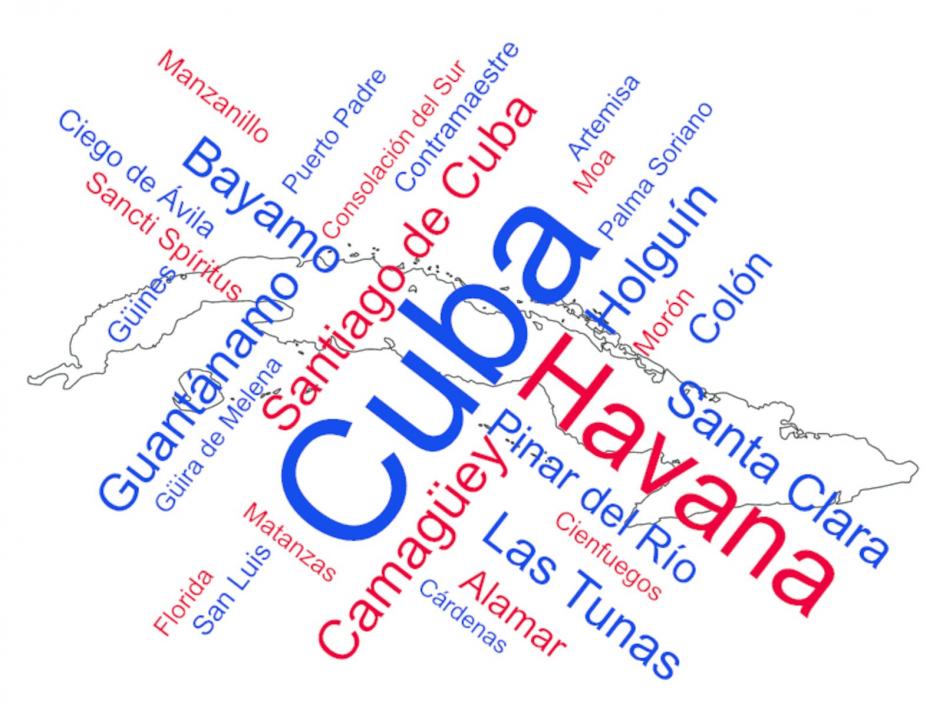La Paloma - Carmen - Cuba: Spanish language connections
 The promising thaw, some time ago, in the relations between Cuba and the U.S. brought to mind that La Paloma, a song that over the years has been adapted and sung in so many languages, actually originated in Cuba.
The promising thaw, some time ago, in the relations between Cuba and the U.S. brought to mind that La Paloma, a song that over the years has been adapted and sung in so many languages, actually originated in Cuba.
In an earlier post, La Paloma Lyrics - Learning Spanish with a Song, we focused mainly on how you can learn some typical Spanish expressions by saying or singing the song's lyrics. In addition, we gave a brief summary of the song's history: Composed around 1860 by the Basque composer Sebastián Iradier after his visit to Havana.
La Paloma - A Song for the Ages
When you google "La Paloma song," you'll find a Wikipedia entry which tells you not only details about the song's motif (the dove), dating back to 492 BC; some of its history (a favorite of Emperor Maximilian of Mexico); early translations into French and German in the 1860's, with new lyrics in different languages, interpretations by famous artists; as well as the many movies in which a version of the song occurs.
La Paloma is arguably the most frequently played song and melody in the world. I've read that in Zanzibar it's being played at the end of weddings, in Romania at the end of funerals. In Germany it's a sailor's song, made famous by Hans Albers in his movie "Grosse Freiheit #7" in 1944.
The La Paloma - Carmen Connection
 When digging a little further, I discovered that there's a connection between Iradier's "La Paloma" and the "Habanera" aria in Bizet's Carmen: "L'amour est un oiseau rebelle," which is said to be very close, melodically, to "El Arreglito," another song composed by Sebastián Iradier. Both are "habaneras," the name used outside of Cuba for the Cuban "contradanza," a type of dance music that became popular in the 19th century.
When digging a little further, I discovered that there's a connection between Iradier's "La Paloma" and the "Habanera" aria in Bizet's Carmen: "L'amour est un oiseau rebelle," which is said to be very close, melodically, to "El Arreglito," another song composed by Sebastián Iradier. Both are "habaneras," the name used outside of Cuba for the Cuban "contradanza," a type of dance music that became popular in the 19th century.
Bizet originally thought El Arreglito was a folk song, only to discover that it had been written by Iradier who had died ten years earlier. Bizet then added a note to the vocal score of "Carmen" to acknowledge the source.
Cuban Music History and Future
 Another Wiki entry further explains: "The Cuban 'contradanza' (also called contradanza criolla, danza, danza criolla, or habanera) was a popular dance music genre of the 19th century. ... Its origins dated back to the European 'contredanse,' which was an internationally popular form of music and dance of the late 18th century.
Another Wiki entry further explains: "The Cuban 'contradanza' (also called contradanza criolla, danza, danza criolla, or habanera) was a popular dance music genre of the 19th century. ... Its origins dated back to the European 'contredanse,' which was an internationally popular form of music and dance of the late 18th century.
It was brought to Santiago de Cuba by French colonists fleeing the Haitian Revolution in the 1790's ... During the first half of the 19th century, the 'contradanza' dominated the Cuban musical scene to such an extent that nearly all Cuban composers of the time, whether composing for the concert hall or the dance hall, tried their hands at the contradanza."
It's interesting that the language circle was completed when Iradier brought back the "habaneras" from his visit to Cuba, and when Bizet used "El Arreglito" for his French opera "Carmen". Many of the well-known dance styles such as rumba  salsa, mambo, chachacha, reportedly began in Cuba.
salsa, mambo, chachacha, reportedly began in Cuba.
In the coming years the rediscovery of Cuban artists, which began in the 90s with the popular "Buena Vista Social Club" album and Wim Wender's 1999 movie about the band, will very likely continue.
And, if you're interested in the island's music and are maybe even considering a visit, the MyCubavisit.com website will give you some worthwhile information and insights.
Postscript:
(1) I recently came a across the post of a young Polyglot-in-the making. She suggests four simple steps for learning with songs to improve both your listening and speaking (maybe even singing!) skills.
1. Listen! 2. Sing! 3. Translate. 4. Retranslate
It's fun AND effective and it works for all languages!
(2) We recently discovered a Spanish language site, Language Zen, which uses Spanish songs a their lyrics as part of their program. You won't find "La Paloma", but many contemporary songs on Language Zen. Also read our "Language Zen" - Learning Spanish - A Review
